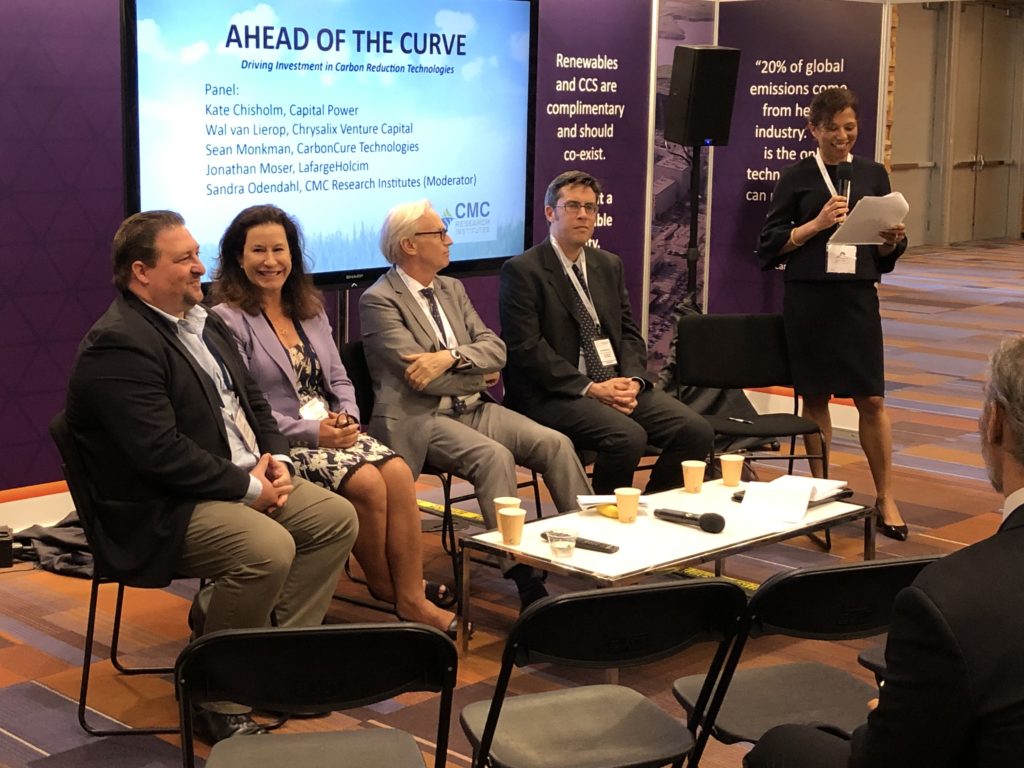Author:
Rachel Shin, Research and Policy Analyst
CMC Research Institutes
Strong international collaboration and the need for public-private partnerships were two key themes that threaded their way through meetings of the 10th Conference for Energy Ministers and 4th Mission Innovation (CEM10/MI-4).

The goal of the Vancouver event was for leaders from over 25 countries to foster knowledge sharing and agree upon next steps to advance the global clean energy transition. Stakeholders included technology developers, government representatives, investors and other stakeholders.
I had the opportunity to attend CEM10/MI4 side events around the topic of the global clean energy transition, accelerating CCUS internationally, the importance of stable regulatory environments, and equality and inclusion in energy disciplines. An overarching theme was the importance of public-private partnerships (PPP) to advance CCUS deployment. PPPs are effective because they combine private and public investors, which brings diversity and stability to project financing. Canada was recognized as a leader in CCUS research and development, and a global example for countries looking to learn from Canadian CCUS projects.
Strong international collaboration among all stakeholders was emphasized as a way to increase the success of a project. Collaboration between those embarking on a project and those who have completed similar undertakings is critical to avoid inefficiencies and share best practices.
Trained workforce shortfall anticipated
Another related theme that emerged was the need for greater numbers of technicians and professionals with applied skills in energy disciplines. There is an anticipated shortage of clean energy technicians in Canada as the research and development of technologies within this sector continues to escalate. High school students and other professionals would benefit from exposure to the career opportunities for trades in the clean technology sector, particularly in areas that are not widely known (i.e. nuclear reactor operators). It was also suggested that societal norms need to shift so the public understands the importance of the trades to the clean energy sector, and that apprenticeships are as valuable as degrees.
CEM10/MI-4 examined the technical, social and political challenges and opportunities associated with the energy transition. The diversity of events during the conference provided well-rounded and realistic discussion of what is required to accelerate a global transition to clean energy.
CMCRI’s panel explores business drivers for CCUS deployment
CMC Research Institutes’ President Sandra Odendahl oversaw a lively CEM10/MI-4side-event panel that explored the business case for investing in CCUS technologies, with a special focus on capture and conversion. And although panelists Kate Chisholm, Capital Power; Wal van Lierop, Chrysalix Venture Capital; Sean Monkman, CarbonCure Technologies; and Jonathan Moser, LafargeHolcim represented different aspects of the technology development ecosystem, they agreed that there are solid fiscal reasons for investing in carbon reducing technologies.
The first insight from the panel was that major Canadian companies, including the world’s largest cement manufacturer (LafargeHolcim), are pursuing CO2 capture and conversion technologies as a source of revenue. LafargeHolcim, Inventys and Total are collaborating to install a carbon capture unit at LafargeHolcim’s Richmond, B.C. plant. In this multi-stage project, carbon captured by the Inventys system will support the demonstration of conversion technologies installed onsite, such as CarbonCure’s technology for CO2 injected concrete. This innovative full-cycle capture and conversion solution should ultimately reduce the CO2 intensity from cement production and generate revenue from customers who will buy the captured CO2 for use in conversion technologies.
Capital Power is also hoping to reduce its carbon footprint and increase revenues. It recently invested in a technology being developed by start-up C2CNT that will convert carbon captured from a flue stream into carbon nanotubes – a strong, light product that can replace materials like aluminum.
But businesses are not only investing in technologies to increase revenues, they are also looking to reduce risk. It was noted that there are several companies in the U.S. and Europe facing lawsuits over their climate practices and that increasingly wealth and pension funds are avoiding traditional, high-polluting industries. It was also pointed out that Pacific Gas and Electric might be the first corporation to go bankrupt because of climate change. And, of course, industries will invest in new technologies because they want to avoid carbon taxes levied against large emitters. And finally, when panelists were asked about public policies that would help the CCUS sector move forward, their response was crisp and clear: regulatory stability, a clear plan that remains in place through changes in government, collaboration, and procurement of innovative new products and services.